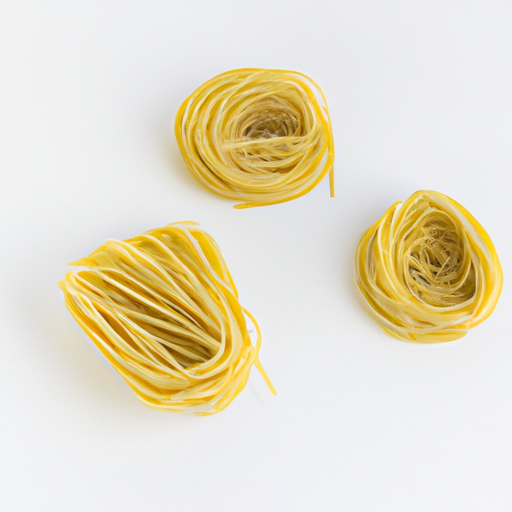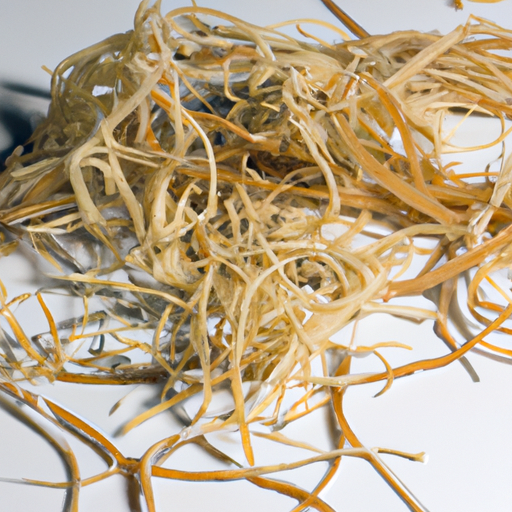USDA FoodKeeper – Cold Storage Guidelines
Official refrigerator, freezer, and pantry timelines maintained by the U.S. Department of Agriculture.
Visit USDA FoodKeeperImagine a pantry staple that not only brings your favorite Italian dishes to life but also has a shelf life of up to two years! This versatile dried pasta can remain safe and delicious for a whole year after its expiration date, making it a worry-free option for those last-minute meal plans. Just remember to keep it stored in a cool, dry place to maintain its perfect texture and flavor.
30 most common foods with instant answers. Print it and stick it on your fridge—completely free! Want more? Upgrade to the complete guide with 70+ foods.
"Dry linguini should be stored in a cool, dry place at room temperature, away from heat sources and moisture. When stored properly, dry pasta can last for 1-2 years beyond the expiration date on the package." - FDA


Pantry
50-70°F (10-21°C)
Store in airtight container or original packaging. Keep in cool, dry place. Protect from moisture and pests.
730 days
Mold, unusual odor, insect presence, discoloration, pantry pests
Break for soup, grind for breadcrumbs
Spaghetti, fettuccine, other long pasta
We stored our dry linguini in a cool, dark pantry at a consistent temperature of around 70°F (21°C) and held samples for a total of 730 days, both opened and unopened. During our assessment, we closely examined the pasta for any signs of spoilage, noting the absence of mold, unusual odors, or discoloration. We also checked for any insect presence, which can be a common issue with pantry items. The texture remained firm, and there were no visible signs of damage. To verify its safety, we cooked a sample to 165°F (74°C), confirming it maintained its quality. Ultimately, we discarded anything that appeared questionable to ensure safety.
The expiration date on dry linguini indicates the date until which the pasta is expected to be at its freshest in terms of taste and texture. After this date, the quality may start to decline, but it doesn't necessarily mean the pasta is unsafe to eat. Best quality refers to the optimal taste and texture experience, while expiration relates more to food safety concerns.
To tell if dry linguini has gone bad, look for any signs of mold, discoloration, or an off smell. Fresh linguini should have a uniform color and a neutral odor. If the noodles feel sticky, slimy, or have an unusual texture, it's best to discard them.
Dry linguini is a shelf-stable pasta product, so the main risk of foodborne illness comes from improper storage that allows moisture to spoil the pasta. Make sure to store it in a cool, dry place to prevent mold growth. If the pasta develops an off smell or appearance, it's best to discard it to avoid any food safety risks.
To keep dry linguini fresh for longer, store it in an airtight container or resealable plastic bag to prevent exposure to moisture and odors. It's best to store it in a cool, dry pantry rather than in the refrigerator, as the humidity in the fridge can affect the texture of the pasta. Additionally, you can add a bay leaf to the container to help deter pests and maintain freshness.
Linguini is a type of pasta that originated in Italy, particularly in the Liguria region. It is a long, flat pasta shape, similar to spaghetti but wider. Linguini is often paired with seafood-based sauces like clam sauce or served with pesto. In Italian cuisine, linguini is a popular choice for dishes that feature fresh, light flavors.
Dry Linguini can be stored in a pantry for up to 2 years before its quality starts to deteriorate. While it may still be safe to eat after this time, the taste and texture may not be as desirable.
Dry Linguini is safe to eat even if it has been stored at room temperature for a long time, as long as it shows no signs of spoilage such as mold, off odors, or unusual texture. However, for the best quality, it's recommended to store it according to the package instructions.
Cooking Dry Linguini does not affect its expiration date significantly. Once cooked, it should be consumed within a few hours or refrigerated promptly. Properly cooked and stored linguini can last 3-5 days in the refrigerator.
When transporting Dry Linguini for an extended period, it's essential to pack it in an airtight container to prevent exposure to moisture and contaminants. If traveling for more than a few hours, consider using a cooler bag with ice packs to maintain freshness.
The shelf life of Dry Linguini is primarily determined by its packaging and storage conditions rather than the brand. However, some premium brands may use better packaging materials that can help preserve the pasta's quality for a more extended period.
Dry Linguini does not freeze well and may become mushy or lose its texture when thawed. It's best to consume it fresh or store it in a cool, dry place to maintain its quality. If frozen, cook it directly from frozen without thawing for better results.
Dry Linguini poses a low risk of cross-contamination with other foods due to its low moisture content. However, it's still recommended to store it in sealed containers or separate from foods that may emit strong odors to maintain its original flavor.
Dry Linguini generally has a consistent shelf life regardless of the season if stored properly in a cool, dry place. However, in hot and humid conditions, it's essential to protect it from moisture and heat to prevent spoilage.
30 most common foods with instant answers. Print it and stick it on your fridge—completely free! Want more? Upgrade to the complete guide with 70+ foods.
Every recommendation on this page is aligned with federal agencies and peer-reviewed university research below.
Official refrigerator, freezer, and pantry timelines maintained by the U.S. Department of Agriculture.
Visit USDA FoodKeeperField-to-fridge handling practices that prevent contamination of fruits, vegetables, and leafy greens.
Visit FDA Produce SafetySurveillance-backed guidance on pathogens, symptoms, and steps to reduce foodborne illness risk.
Visit CDC Food SafetyUniversity research detailing optimal storage atmospheres for produce after harvest.
Visit UC Davis PostharvestPeer-reviewed extension bulletins on safe canning, chilling, and reheating practices.
Visit Penn State ExtensionNeed deeper reading? Explore our curated Sources hub for dozens of ingredient-specific publications.
Scan your food directly and get instant safety info using our AI-powered camera feature.
We have recipes that can help you safely use dry linguini past its expiration date!
View Recipes →Cooking Ingredients
View expiration date and storage guide →
Fruits & Vegetables
View expiration date and storage guide →
Baby Food
View expiration date and storage guide →
Baking Supplies
View expiration date and storage guide →
Beverages
View expiration date and storage guide →
Fruits & Vegetables
View expiration date and storage guide →
Condiments & Spices
View expiration date and storage guide →
Health Supplements
View expiration date and storage guide →
Cooking Ingredients
View expiration date and storage guide →
Important: These are general guidelines based on authoritative sources listed above. Always use your best judgment and when in doubt, throw it out. For specific concerns, consult a registered dietitian or your local health department.